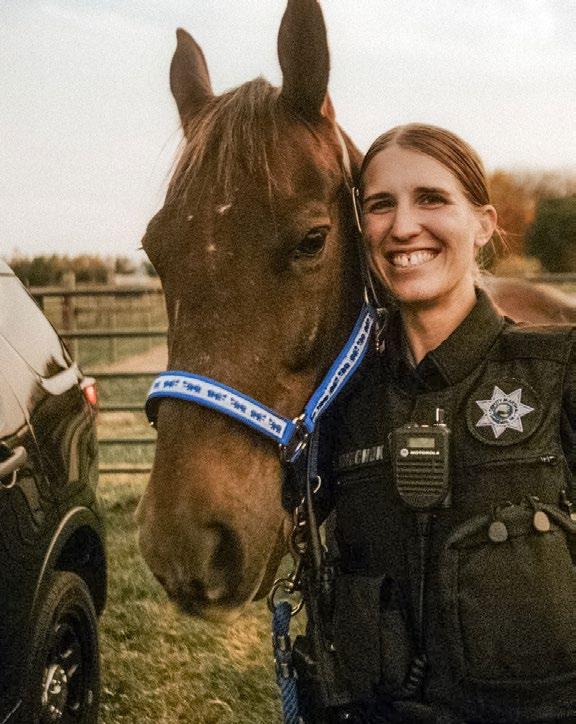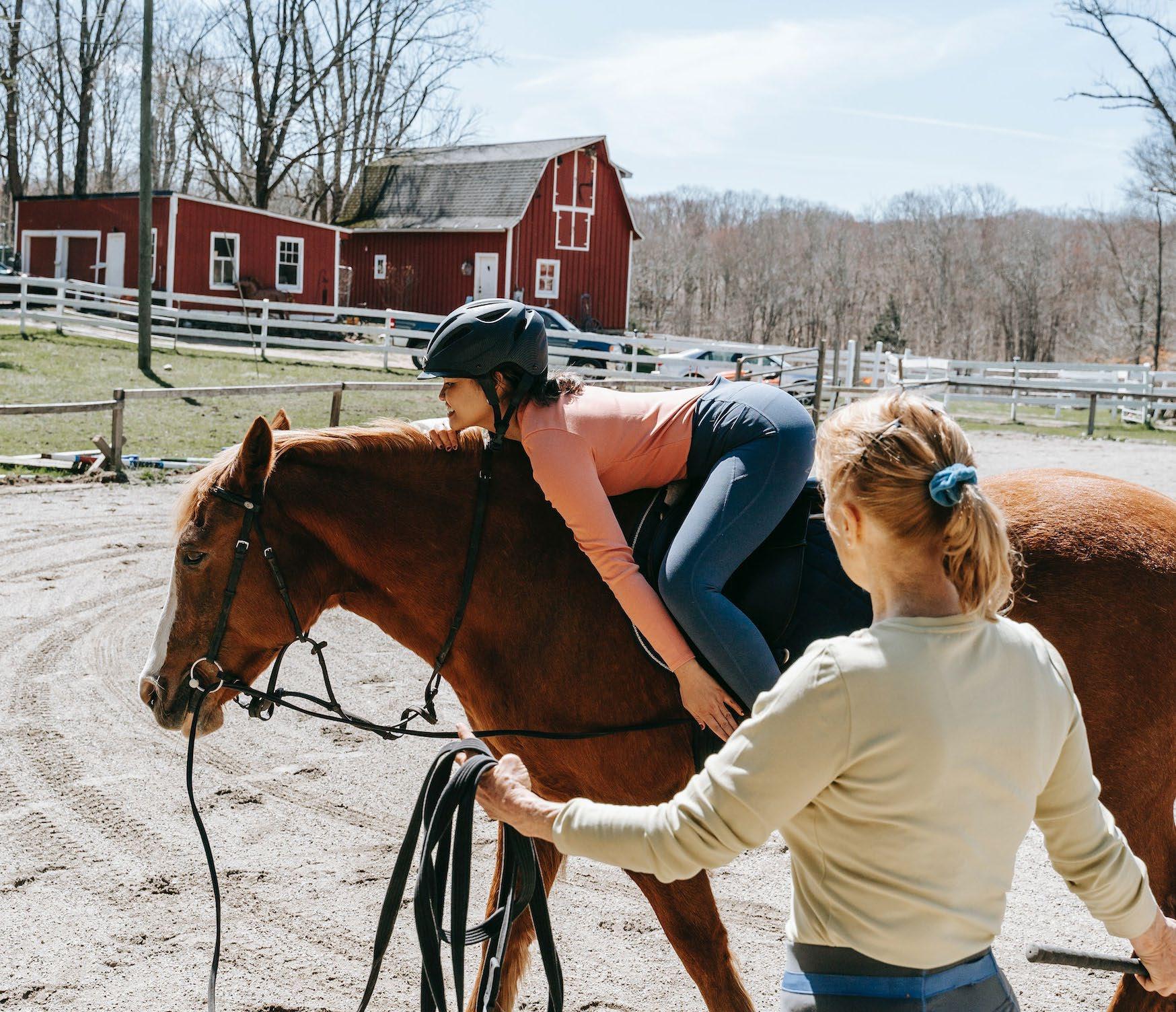
9 minute read
Building Proactive Riders
By Lydia Fairchok
Have you ever heard of a pre-attack indicator? Cops have. Pre-attack indicators are any warning signs that precede a violent assault. They could be obvious, like squaring up into a fighting stance, drawing a weapon, or clenching hands into fists. Or they could be inconspicuous, like a person shifting their weight, reaching into their pockets, or unconsciously touching a place on the body where a weapon is concealed. Pre-attack indicators, taken in context, give law enforcement critical clues that a situation is about to escalate.
Advertisement
Sadly, officers do not always perceive that an attack is forthcoming. The disconnect happens for a variety of reasons: officers can be distracted, uneducated, or unprepared. They may be afraid of using too much force, or unsure how to apply it properly. They may be caught in a moment of disbelief that the bad situation is actually happening, or there may simply not be enough time to respond.
Keeping an eye out for violent assaults is probably not a part of your daily routine
(at least I hope not!) but does this concept remind you of horses and riders? Have you ever seen a horse whose every move indicated he was an explosion waiting to happen, but the rider didn’t seem to be aware? Or a handler who is so preoccupied she doesn’t realize her horse is misbehaving? While "attack" is typically too strong a word for things horses do that take humans by surprise, it is fair to say that pre-action indicators from our fourlegged friends are regularly overlooked.
From grabbing grass to running out at fences, there are very few true ambushes in equine body language—mainly missed messages. Helping our students tune into those messages is a critical piece of building proactive horse handlers who can correctly anticipate and divert unwanted behaviors before they become a problem.
This process starts with correctly identifying why each individual student is caught off guard. Different factors may come to bear in each situation, but the reasons can generally be grouped into one of three broad categories: information deficits, attention deficits, and confidence deficits. Knowing what causes each pitfall and how to overcome them will empower you to help your students to think ahead and get better results from their equine partnerships.
Information deficits
Information deficits are usually the easiest to correct. They are simply a matter of filling the rider’s toolbox with the knowledge and skills to address problems they are already noticing. People can encounter information deficits regardless of their level of experience, but they are especially common with earlystage students and those who lack structured horsemanship education.
For example, a young rider may be aware that his pony pulls the reins and veers to the side before grabbing grass, but without guidance he will likely default to the ineffective response of hauling back on both reins and water-skiing in the stirrups. The rider is already aware of the pre-action indicators— pulling and veering—but without education his game plan is doomed to failure. A good instructor will help him overcome the immediate problem with proper corrective aids, then guide him to notice sooner and more subtle versions of the precursors so he can apply sooner and more subtle corrections. Eventually the pony will cease the problematic behavior because the rider is so attuned to the pre-action indicators that he can now proactively anticipate and redirect whenever the pony is about to engage in them.
Outcomes like this should be a regular, intentional part of your riders’ education, and should apply to both mounted and unmounted interactions. One way to accomplish this is through an empathycentered teaching approach that equips students to seek the reasons behind their horses’ behaviors. (See my Spring 2023 article, Building Empathetic Riders, for ways to incorporate this awareness training through positive anthropomorphism.) Additional options such as groundwork lessons, equine role playing, and pasturewatching parties to observe herd dynamics are fun ways to open conversations about why horses do what they do. As your students absorb knowledge about the ways of the horse, their information deficit shrinks and their ability to think ahead of the horse grows.
Attention deficits
In the age of mental health awareness, “attention deficit” has strong connotations. In this context, I mean the distraction issues that impact all riders (and instructors!) regardless of age, experience level, or brain type. After all, when our work, school, home, and even driving routines are saturated with doing more than one thing at once, why would we expect the barn to be any different? Lack of focus allows tiny tensions and subtle weight transfers to go unnoticed until they erupt in unwanted behaviors, placing the handler in a reactive problem-solving mode. This is the very opposite of proactivity!
Unfortunately, students often arrive to lessons with attentional bandwidths that are already stretched thin. They may be feeling the effects of difficult days at work or school, chaotic home lives, or even anxiety about riding itself. You can help your students step away from their stressors by creating an intentional culture of focus at your barn. Model the message that handling horses is a wholeminded activity and take steps to create an environment in which this is possible.
First, separate students from their phones. This should be mandatory for youth and strongly recommended for adults. If an adult has an extenuating reason to want their phone nearby while they ride, it should not be carried on their person and should be placed in silent or “do not disturb” mode. If someone must take an urgent call, they should do so at the halt while maintaining the reins in one hand.
Once digital distractions are minimized, practice mindfulness or meditative exercises to help riders leave their burdens outside the arena. Even a few moments at the beginning of a ride or before a challenging exercise can have a valuable grounding effect. While some people may initially balk at the idea of being away from their devices or “wasting” riding time on relaxation techniques, most will find the habits refreshing after they give them a fair chance.
Of course, reducing distractions is only part of the equation. You must also create lessons that engage the students’ minds throughout their lesson. This does not mean that every pair has to be moving at all times; if riders are running patterns individually, set the expectation that those waiting their turn will not devolve into chit-chatting arena clutter. Instead, ask them to find a compliment and a critique about their classmate’s exercise, or give them small missions to complete amongst themselves. Even ‘silly’ objectives such as counting tail swishes or noticing which leg their horse rests first are actually cultivating a mindset of attunement to the horse and their surroundings. When focus, rather than distraction, is the norm, riders learn much more from horses than you could ever teach them with words alone.

Confidence deficits
Unlike those whose minds have wandered elsewhere, or those who can identify an issue without knowing how to prevent it, the confidence-deficient rider sees a problem coming and can generally describe what should be done about it. They simply don’t…do it. These are the riders who sense that their horse is about to run out at a jump and rather than working to correct it, they seize up in preparation for the realization of their fear. They know their horse is about to break to the walk from the trot, but their leg cues are far too late and far too weak because they don’t want to kick him before he has “actually done something wrong”. They are forever wondering if they have hurt or bothered their horses with the aids, apply the same cues over and over without changing intensity, and release pressure as an apology instead of reward.
This is the most difficult deficit to work with because you cannot explain this student into improvement; she already has memorized the correct answer. Neither can you mentally engage her into fixing it, because she is already devoting every bit of her anxious energy towards the situation. Confidencedeficient riders cannot improve unless they are empowered.
Empowerment comes in different forms for different riders. For those who worry about making the horse uncomfortable, having appropriate aids demonstrated physically may convince them that the horse is quite able to tolerate the pressure, and actually needs a tangible cue to understand what he is supposed to be doing. For example, a rider who delivers unconvincing leg cues may benefit from having the instructor physically press her leg into the horse’s side. Unmounted and standing side by side, you might use your own leg to demonstrate bumping the student’s leg (ask permission and give warning first!), or you could take their place in the saddle and have them put their hand between the horse and your leg as you apply the aid. Emphasize the idea that one clear, compelling cue is much kinder than perpetually nagging the horse with half-hearted kicks. Remind her that you would not ask or allow her to do something that would harm the horse.
For those who worry about doing something incorrectly, low-stakes repetition is key. Use a longe line to allow the rider to isolate the problem without having to be the sole manager of speed and direction. Sometimes this focused environment is enough to bring out more assertiveness. If not, or if the issue is not one that can be addressed on a line, break the response down into slow-motion segments and rehearse the movements at lower intensities until they are smooth and secure. This could start with gently acting out the cues at the halt, then the walk, all while making a mental “video” of what the signal should feel like at full strength. When the student is very sure in their own mind that they are able to properly communicate the aid to the horse, they are more likely to follow through under pressure.
Remember that confidence-deficient riders may be quite balanced, sensitive, and skilled, which can make it surprising when they fail to nip an unwanted behavior in the bud.
Your verbal response to these incidents has tremendous power to undermine or support their confidence levels, so be careful not to say anything that could be misconstrued as criticism or teasing. Take a problemsolving approach by asking questions and encouraging self-reflection to discover the individual basis of their hesitation. It may be different than the examples given, and you may have to get creative to address it.
Diagnosing the deficit
Asking questions and using self-reflection is actually useful for figuring out what is behind any horse-human communication deficit you observe in your students. Discerning the root of the problem will not only help you develop a targeted solution; it will also keep you from discouraging your students with an ineffective solution. For example, riders who lack informational guidance will not benefit from merely being pushed through an incident without explanations. A rider who is generally knowledgeable but suffered a lapse in confidence or attention may feel belittled if you over-explain the mechanics of the mishap. By the same token, a mentally engaged rider who struggles with or has never really learned the correct response to a problem might be frustrated if you imply their issue is due to distraction.
Unfortunately for us instructors, diagnosing a deficit is not always straightforward. The categories discussed here are general themes only, not an exhaustive list. They are also not mutually exclusive. A rider may be both underconfident and underinformed, or distraction may amplify an underlying cause. Someone who is bold in the trot may experience a confidence deficit at the canter, then fall into distraction while “just” walking. You must be prepared to identify what is causing your student’s struggle at the time it is occurring, and act accordingly. When in doubt, assess the following factors:
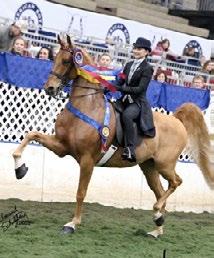
• Has the rider definitely been taught how to respond to this issue?
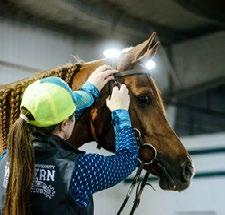
• Can the rider articulate what happened?
• Can they explain the solution?
• Have they ever actually had an opportunity to practice the solution?
• When did the rider realize there was a problem?
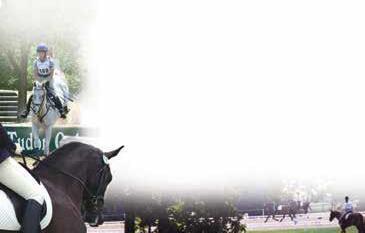
• Did they feel surprised?
• How did they feel about correcting the horse?
• Was their correction effective?

Remember that not all fumbled situations are born out of deficits. Horses bring their own emotional baggage to the table, environmental factors throw curveballs, and sometimes even the most educated, confident, and alert riders simply don’t have enough time to react to a sudden situation. Most often, though, equine mishaps are heralded by pre-action indicators, no matter how fleeting or subtle they may be, and proactive riding can keep any number of unwanted or dangerous behaviors at bay. Therefore, we have a duty to build into our students the importance of what the horse is communicating and how to intervene at the earliest signs.
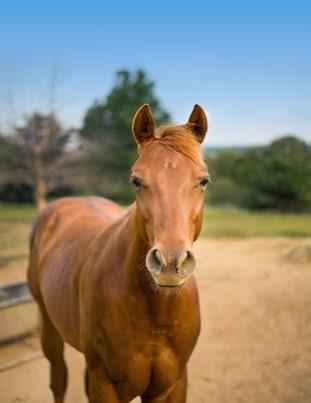
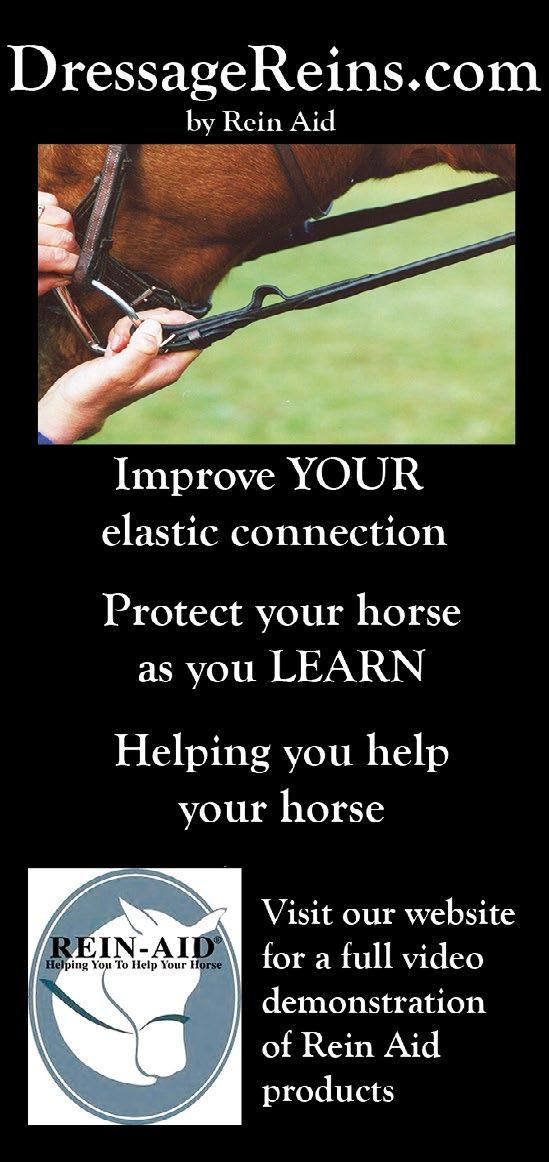
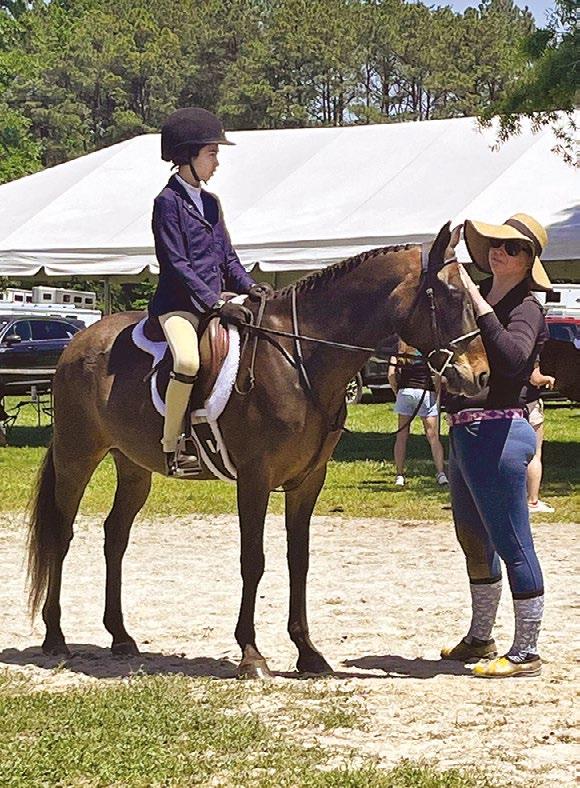
With this duty comes a host of benefits for you and your students alike: You can provide tailored solutions without risking discouragement. You can identify and repair gaps or fallacies in the student’s thought processes. You will create riders who understand the “why” behind their own perceived failures, which allows them to have both grace for the moment and goals for the future. Most importantly, when you make pre-action indicators a central part of your instruction you give your riders the necessary factors they need in order to be safe, effective, and proactive equestrians.
About the author:
Lydia Fairchok is certified in Recreational Riding Level 1, and lives and teaches with her three horses in Central Indiana. Lydia segued from a full time instruction career to the field of public safety in 2014 and continues to teach a small number of students while working as a police officer and 9-1-1 dispatcher.
$5,000,000.
